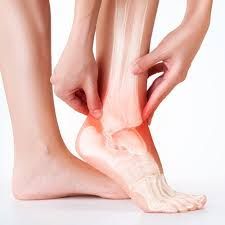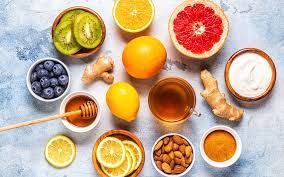Why Your Feet Hurt: Common Causes and How Chiropractic and Massage Can Help

Your feet do a lot for you. They carry you through long work shifts, daily errands, intense workouts, and weekend adventures. But when they start hurting, even the simplest activities can feel like a struggle. The good news? You don’t have to just live with foot pain. Chiropractic care and massage therapy can help get you back on your feet—literally.
Why Do My Feet Hurt?
Foot pain isn’t just bad luck; it’s often the result of specific conditions or habits. Here are some common culprits:
1. Plantar Fasciitis – The Morning Foot Curse
Ever step out of bed and feel like you’re walking on hot coals? That’s probably plantar fasciitis. This condition happens when the thick band of tissue running along the bottom of your foot (the plantar fascia) gets irritated or inflamed. It’s common in runners, people who stand all day, and those who wear unsupportive shoes.
2. Flat Feet – The Unsupportive Arch Enemy
Some people are born with flat feet, while others develop them over time. Without a proper arch, your feet absorb more stress with every step, leading to pain in the feet, ankles, knees, and even the lower back.
3. Tight Calves – Sneaky Foot Pain Instigators
Tight calf muscles pull on your Achilles tendon, which, in turn, tugs on your heel and arch. This tension can contribute to heel pain, plantar fasciitis, and even Achilles tendonitis.
4. Poor Footwear – Your Shoes Might Be the Problem
High heels, flip-flops, and unsupportive sneakers may look good, but they aren’t doing your feet any favors. Ill-fitting shoes can cause bunions, hammertoes, and general foot discomfort.
5. Nerve Compression – When the Signals Get Mixed Up
Sometimes, foot pain isn’t even about the foot itself. Pinched nerves in the lower back or legs can send pain shooting down into the feet. Sciatica, tarsal tunnel syndrome, and Morton’s neuroma are all conditions where nerve compression can cause tingling, numbness, or stabbing pain in the feet.
How Chiropractic Care Can Help Your Feet
You might think chiropractors only focus on the spine, but they can also adjust and treat foot issues. Your feet are the foundation of your body—when something’s off down there, it can throw off your entire alignment. Here’s how chiropractic care can help:
1. Foot and Ankle Adjustments
Just like your spine, your foot and ankle joints can become misaligned. Chiropractors can make gentle adjustments to restore proper movement and function, reducing pain and preventing further issues.
2. Gait Analysis
If your feet aren’t moving correctly, your whole body pays the price. A chiropractor can assess your gait (how you walk) to identify movement patterns that may be contributing to pain. By recognizing imbalances or misalignments, they can offer strategies to improve movement and reduce strain on your feet and lower body.
3. Addressing Nerve Issues
If your foot pain is caused by nerve compression in your lower back, chiropractic adjustments can help relieve pressure on the nerves, reducing pain and improving sensation in your feet
.
4. Improving Mobility and Preventing Future Pain
Chiropractic care doesn’t just treat pain—it helps prevent it. By improving foot mobility, strengthening supporting muscles, and addressing underlying misalignments, you’ll be less likely to develop recurring foot problems.
How Massage Therapy Can Help Your Feet
If you’ve ever had a good foot massage, you know how incredible it feels. But beyond relaxation, massage therapy offers real benefits for foot pain relief.
1. Releasing Muscle Tension
Tight muscles in your feet, calves, and legs can cause pain and stiffness. Massage therapy works out those knots, improving flexibility and reducing tension that contributes to foot pain.
2. Increasing Circulation
Better blood flow means faster healing. Massage helps increase circulation, delivering oxygen and nutrients to sore, tired feet while flushing out waste products that can contribute to pain and inflammation.
3. Breaking Up Scar Tissue
If you’ve had a foot injury in the past, scar tissue may be causing stiffness or discomfort. Deep tissue massage can help break up adhesions, restoring normal movement and function.
4. Reducing Inflammation and Swelling
If your feet swell after a long day or intense activity, massage therapy can help reduce inflammation and improve lymphatic drainage, leaving your feet feeling refreshed.
At-Home Tips to Keep Your Feet Happy
While chiropractic care and massage therapy can work wonders, keeping your feet pain-free also requires some daily TLC. Try these at-home strategies:
1. Stretch Your Calves and Arches
Stretching can relieve tension that contributes to foot pain. Try this simple move: Stand with your toes on a step and let your heels drop down for a deep calf stretch. You can also roll a lacrosse ball or frozen water bottle under your foot to massage the arch.
2. Wear Supportive Shoes
Ditch the flimsy flip-flops and unsupportive sneakers. Look for shoes with proper arch support and cushioning, especially if you spend a lot of time on your feet.
3. Strengthen Your Feet
Simple exercises like toe curls, heel raises, and towel scrunches can help strengthen the small muscles in your feet, improving stability and reducing pain.
4. Ice and Elevate When Needed
If your feet are swollen and sore, apply ice for 15-20 minutes and elevate them to reduce inflammation.
5. Pay Attention to Posture and Movement
Since foot pain can stem from issues higher up the kinetic chain (like the knees, hips, or lower back), maintaining good posture and body mechanics can make a big difference in preventing foot pain.
Put Your Best Foot Forward
Foot pain can be frustrating, but it doesn’t have to be a permanent problem. Chiropractic care and massage therapy offer effective, evidence-based solutions to get you back on your feet and moving comfortably again. If you’re struggling with foot pain, don’t wait until it gets worse—schedule an appointment with a chiropractor or massage therapist today and give your feet the care they deserve!
Your feet carry you through life. It’s time to return the favor.
Bethany Wolcott
D’Youville Chiropractic ‘26












